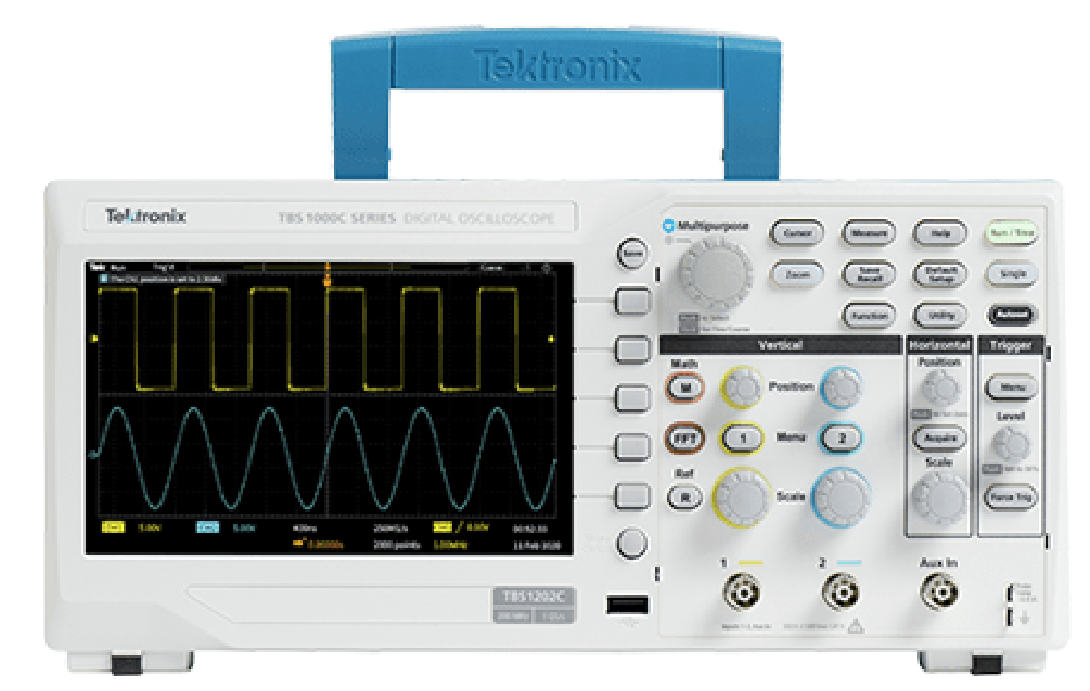What is an oscilloscope?

An oscilloscope, formerly known as an oscillograph (informally scope, oscope, or o-scope), is an instrument that graphically displays electrical signals and shows how those signals change over time. It measures these signals by connecting with a sensor, which is a device that creates an electrical signal in response to physical stimuli like sound, light and heat. For instance, a microphone is a sensor that converts sound into an electrical signal.
Here we’ll cover everything you need to know about an oscilloscope from how it works to how to find the right one.
What is an oscilloscope used for?
Oscopes are often used when designing, manufacturing or repairing electronic equipment. Engineers use an oscilloscope to measure electrical phenomena and solve measurement challenges quickly and accurately to verify their designs or confirm that a sensor is working properly.
Who uses an oscilloscope?
Scientists, engineers, physicists, repair technicians and educators use oscilloscopes to see signals change over time. An automotive engineer might use an oscilloscope to correlate analog data from sensors with serial data from the engine control unit. Meanwhile, a medical researcher might use an oscilloscope to measure brain waves. There is no shortage of applications for this powerful instrument.
How does an oscilloscope work?
There are three primary oscilloscope systems: vertical, horizontal and trigger systems. Together, these systems provide information about the electrical signal, so the oscilloscope can accurately reconstruct it. The picture below shows the block diagram of an oscilloscope.

The first stage attenuates or amplifies the signal voltage in order to optimize the amplitude of the signal; this is referred to as the vertical system since it depends on the vertical scale control. Then the signal reaches the acquisition block, where the analog-to-digital converter (ADC) is used to sample the signal voltage and convert it in a digital format value. The horizontal system, which contains a sample clock, gives each voltage sample a precise time (horizontal) coordinate. The sample clock drives the ADC and its digital output is stored in the acquisition memory as a record point. The trigger system detects a user-specified condition in the incoming signal stream and applies it as a time reference in the waveform record. The event that met the trigger criteria is displayed, as is the waveform data preceding or following the event.
Explore Our Selection
What does an oscilloscope measure?
Simply put, an oscilloscope measures voltage waves. On an oscilloscope screen, voltage is displayed vertically on the Y axis and time is represented horizontally on the X axis. The intensity or brightness of the display is sometimes called the Z axis. The resulting graph can tell you many things about a signal, including:

- Time and voltage values of a signal
- Frequency of an oscillating signal
- The “moving parts” of a circuit represented by the signal
- Frequency with which a particular portion of the signal is occurring relative to other portions
- Whether or not a malfunctioning component is distorting the signal
- How much of a signal is direct current (DC) or alternating current (AC)
- The portion of the signal that is noise
- Whether noise is changing over time
Oscilloscope vs. digital multimeter vs. voltmeter
Oscilloscope, digital multimeter, voltmeter—what’s the difference and are they interchangeable? A voltmeter measures the potential difference between two nodes on an electrical circuit. Though a digital multimeter also measures voltage, it can measure current and resistance as well. And an oscilloscope shows how the voltage changes over time. Typically, as the application becomes more advanced, so does the instrument.
Types of oscilloscopes
There are two types of oscilloscopes: analog and digital. An analog oscilloscope captures and displays the voltage wave form in its original form, while a digital oscilloscope uses an analog-to-digital converter to capture and store information digitally. When it comes to debugging and design, most engineers today use digital oscilloscopes. Digital oscilloscopes generally fall into five categories, ranging from the less expensive general-purpose oscilloscopes to more complex oscilloscopes that, while more expensive, offer advanced functionality and greater accuracy than the more basic models.


